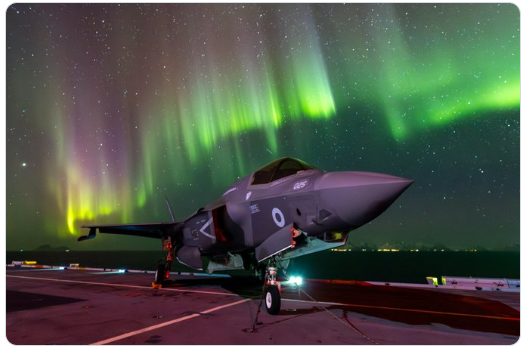When scholars and pundits discuss digital diplomacy, they tend to equate this term with social media activities. Indeed, the majority of digital diplomacy studies have focused on how and why social media is used by foreign ministries (MFAs), embassies, Ambassadors and International Organisations. Studies have explored the numerous ways in which states use sites such as Twitter, Facebook and TikTok be it to manage the national image, resolve crises or advance foreign policy objectives. Only a few studies to date have explored how digitalization has impacted the provision of consular aid.
Notably, consular aid has long since benefited from digital technologies. In the wake of the 2015 terrorist attack in Paris, Embassies rushed to Twitter to share consular information and emergency phone numbers. The Canadian MFA took to Twitter in an attempt to help citizens stranded in Nepal following a devastating earthquake in 2014. And as far back as 2013, the Kenyan MFA used Twitter to help evacuate citizens from South Sudan following the outbreak of civil war.
In more recent years MFAs have invested additional resources in digitalizing their consular efforts. This has included launching social media sites dedicated to travel warnings; operating websites that offer consular information and assistance as well as launching consular smartphone applications. The MFAs of Poland, Norway and Canada have all released smartphone applications that offer easy access to consular information and that provide users with travel warning when necessary.
Consular aid played a pivotal role in the first wave of the Covid19 pandemic as MFAs around the world sought to repatriate citizens. Between March and April of 2020, many MFAs used social media to announce specially chartered flights or aid citizens stranded abroad. MFAs also tended shared consular “success stories”. Israeli MFA tweets, for instance, depicted Ambassadors escorting travelers to emergency flights while the UK Foreign Office (FCO) routinely published the number of citizens it had helped repatriate from Covid19 stricken countries. Some have argued that diplomats have been eager to digitalize their consular efforts as these may help diplomats build a loyal domestic constituency. It is through effective consular aid that citizens may come to value their MFA enabling diplomats to safeguard their remit within governments. A remit that keeps narrowing as more government ministries collaborate with their foreign peers. Consular diplomacy is thus a form of domestic diplomacy.
However, the question that arose this week is whether consular information may also serve as a signal between states embroiled in a conflict. As tensions between Russia and NATO have mounted, diplomats and MFAs have taken to Twitter in order to warn of a possible Russian invasion of Ukraine. The French MFA constantly publishes tweets supporting a collaborative responses to Russian aggression while urging Russia to de-escalate tensions along Ukraine’s border. Similarly, the President of the EU Commission has announced emergency aid to Ukraine ahead of a possible armed clash with Russia.
Then, some 48 hours ago, states also began to issue travel warnings to Russian and Ukraine. These consular tweets vary from ministry to ministry. For instance, the UK FCO has published three tweets over the past few days. Two of these discourage British citizens from visiting Ukraine or Crimea, while also urging citizens to register with the British Embassy in Kiev should they need to be evacuated. A third, and somewhat more alarming tweet stated that the British Embassy in Kiev would remain open despite the fact that “some Embassy staff and dependents are being withdrawn” from Ukraine. Measures such as evacuating dependents are the diplomatic equivalent of an actor yelling “Cry Havoc! and Let Slip the Dogs of War”. What is important is that this information was published as part of a consular tweet though it might signal that the UK government is expecting further escalation in tensions with Russia.
Similarly, the US State Department has published two recent tweets. Notably, On January 20 the Department published a list of countries that should be avoided by American travelers. The list did not include Russia or Ukraine. Yet on January 24, the Department issued a Level 4 travel warning for Russia. Unlike the British FCO, the State Department directly linked this message to tensions in Ukraine writing “The Department continues to advise US citizens to not travel to Russia due to ongoing tension along the border with Ukraine. There is potential for harassment against US citizens”. At the same time, a Level 4 travel warning was also issued for Ukraine, with the Department mentioning it had begun evacuating families of American diplomats from Kiev. Much like the FCO, this important American message was published as part of a consular travel warning.
The Canadian MFA published a subtler consular message simply urging citizens to register with the Embassy and “evaluate if your presence is essential”. There was no mention of tensions with Russia or the evacuation of diplomats’ families.
The Australian MFA on the other hand was blunter, clearly warning its citizens of armed conflict and instructing them to leave Ukraine while “it’s safe to do so”.
An important question is whether these tweets are merely examples of cautionary steps taken to safeguard citizens located abroad or whether they are signals sent from one state to another in the midst of an international crisis. For instance, Baltic States or Ukraine may view these tweets as an indication that Western nations are now certain that Russia plans to invade Ukraine. If this is the case, such tweets may lead to measures that could actually hasten an armed conflict such as increasing military readiness in Eastern Europe. These tweets may also be regarded as signals by Russia according to which Western nations are preparing for armed conflict and mobilizing their resources accordingly. This could, hypothetically, motivate Russia to decrease tensions fearing that the situation in Ukraine is getting out of control. Such measures could include a partial withdrawal of troops or an end to military manoeuvres with Belarus.
Alas, answering this question is beyond the scope of this blog post. Yet the examples presented in this post could suggest that academics need to pay closer attention to how consular messages, published on social media, may now serve as signals exchanged between states during international crises.





Leave a comment